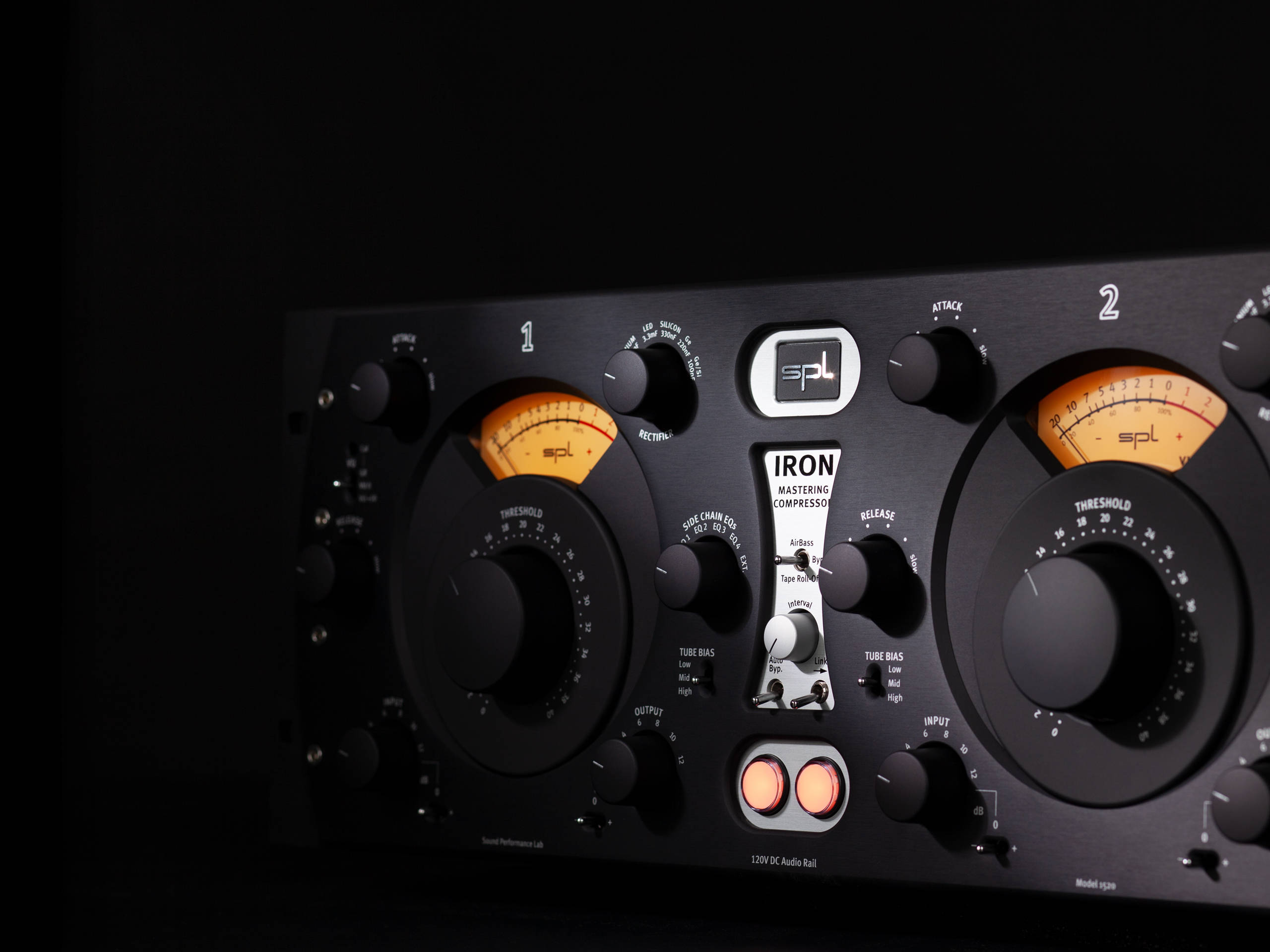
The IRON Mastering Compressor combines the sonic benefits of legendary vintage tube compressors with the advantages of the SPL 120V technology in one device. The result is a pleasant, melodic-sounding, musical compression inspired by vintage compressors of the radio era, yet very flexible and perfectly adapted to the needs of modern mastering studios and productions.
IRON adds power, size and depth to any signal – without being obtrusive.
The IRON Mastering Compressor is a variable-bias limiter/compressor from the basic concept. Through the integration of new technologies, this concept gets significantly improved.
IRON works on the principle of the bias controlled remote cutoff tube. Sharp-cutoff tubes with a steeper characteristic are parallelly connected to these.
Depending on the level of the signal amplitude, one or another tube is in charge for signal processing/limiting. The positive result is a well-balanced sound and more controllable settings of the parameters.
All four tubes in the IRON are a specially matched set to the overall system.
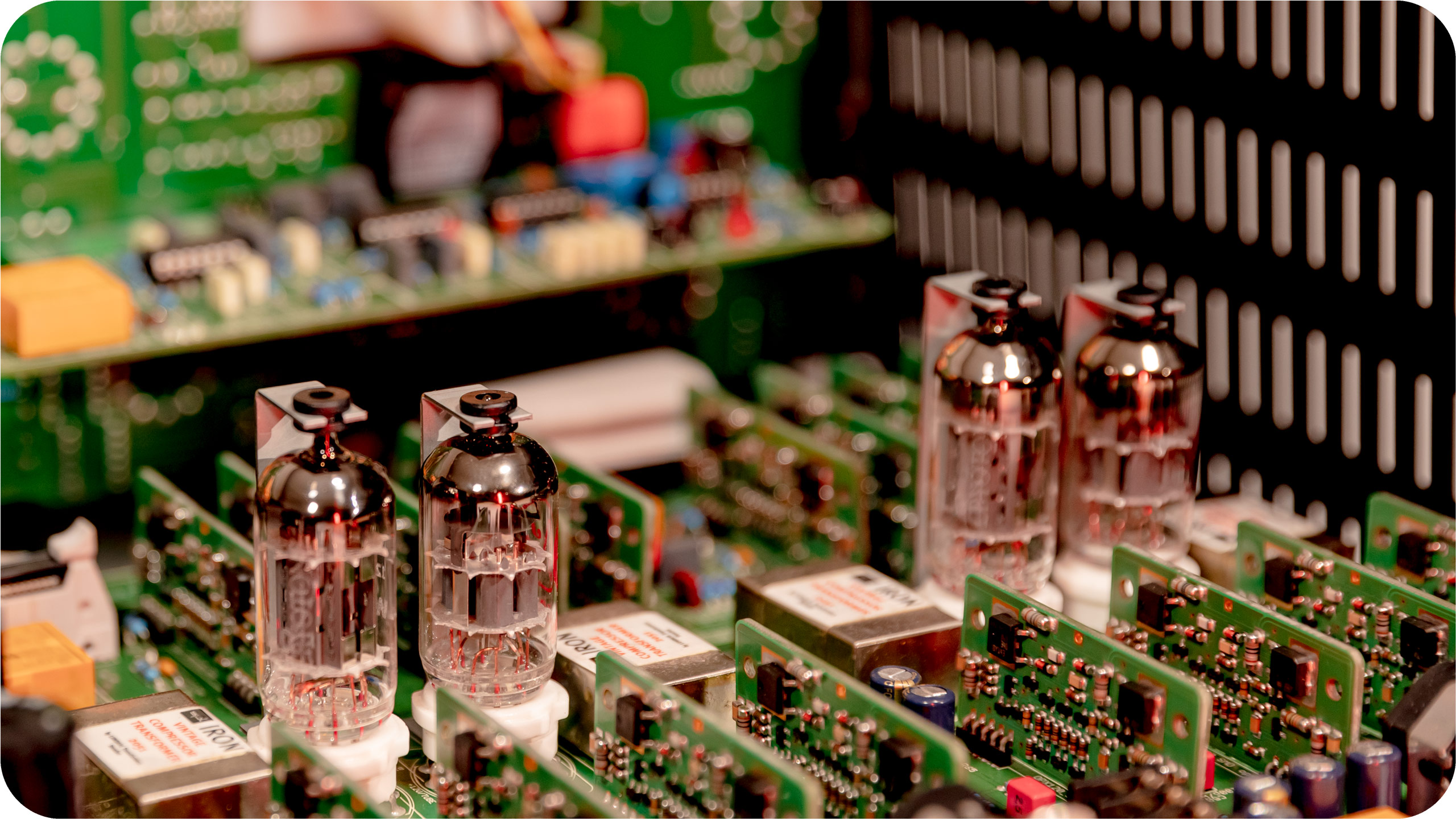
The Wathen CryoTone™12AX7-WCM Long Plate tubes are not only a perfect match as a pair – but also the perfect complement to the selected 12AU7 tubes.
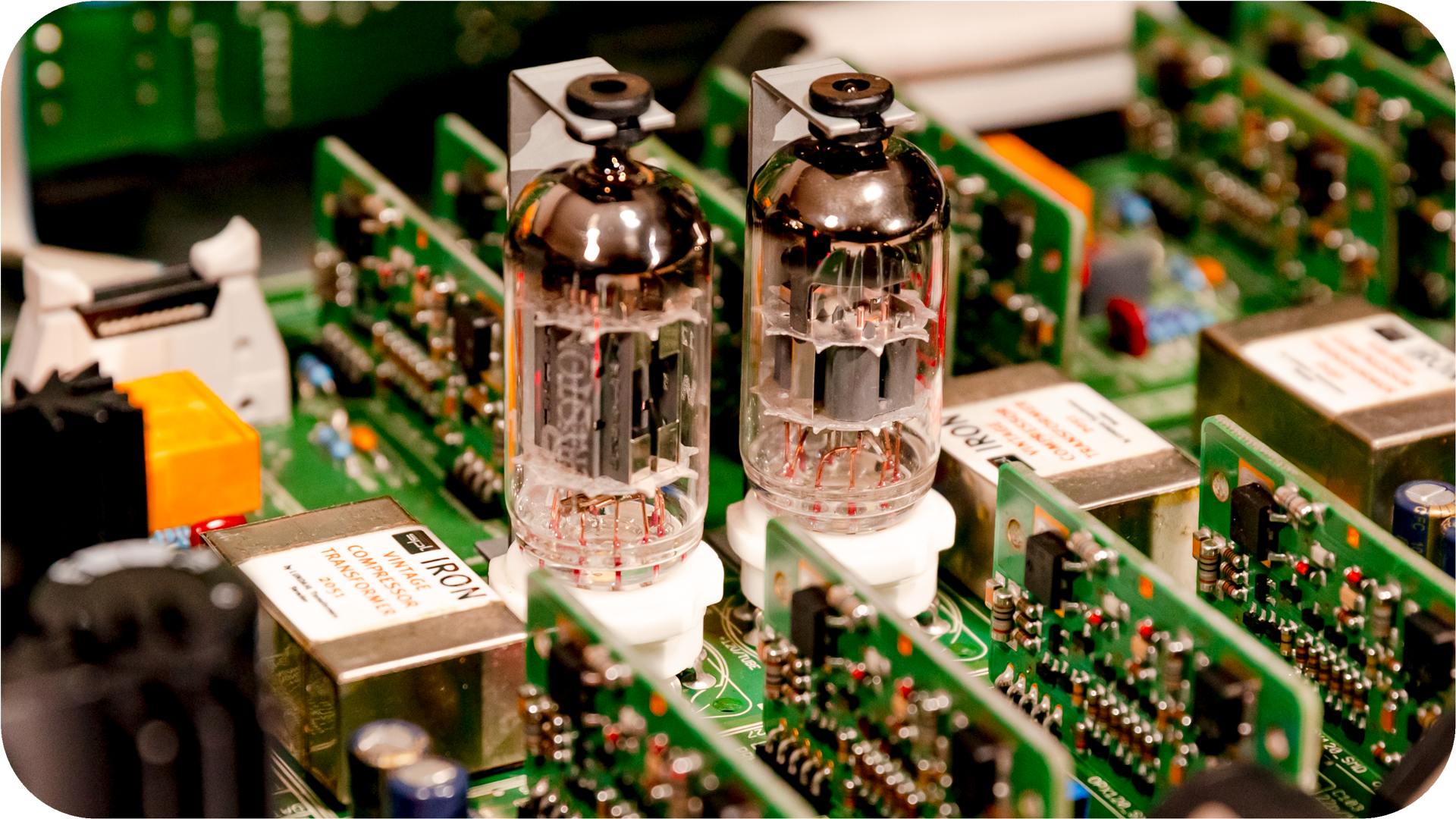
The tubes are integrated into the IRON’s signal flow via special Lundahl manufactured balanced high-level double core mu-metal-iron transformers.
An independent feed-forward resistive vactrol-opto-isolator in the control path of the variable-bias tube circuit intercepts extreme signal peaks, ensuring that the tube circuitry achieves its full sonic potential.
Thanks to SPL 120V technology, tube compressor technology sets new standards in IRON.
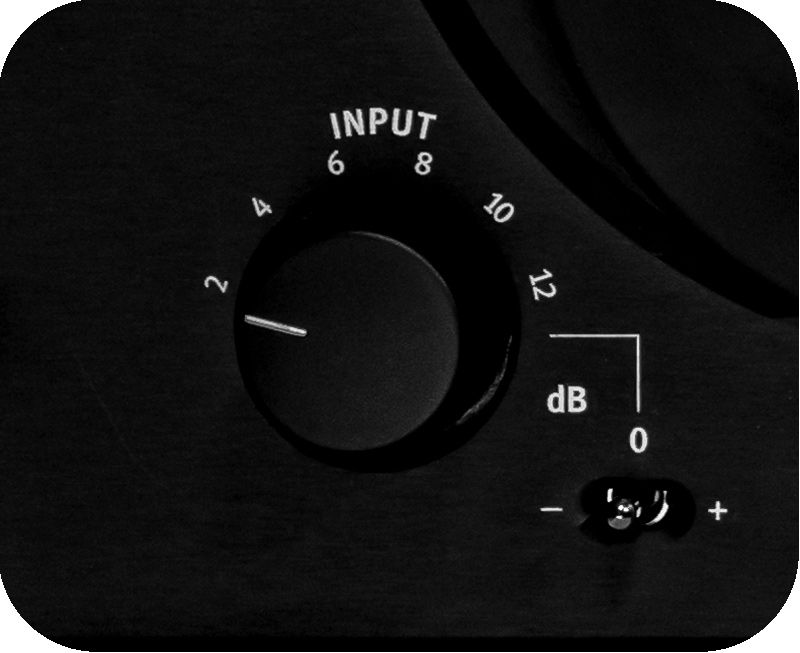
The input level is switchable in a control range of +/- 12 dB in 2 dB steps. An increase of the input level leads to more intensive compression.
Tip: For audio material with a narrow dynamic range and a lot of information in the lower frequency spectrum, attenuating the input signal with the Input switch allows the compressor to work in a much more relaxed manner.

„SPL’s IRON allows sculpting compression at the circuit design level. I could customize this compressor very specifically to produce the perfect style and amount of processing for any job.“
Barry Rudolph
Mix Magazine
The output level is also adjustable in a control range of +/- 12 dB in 2 dB steps. This allows the audio level to be increased again after compression.
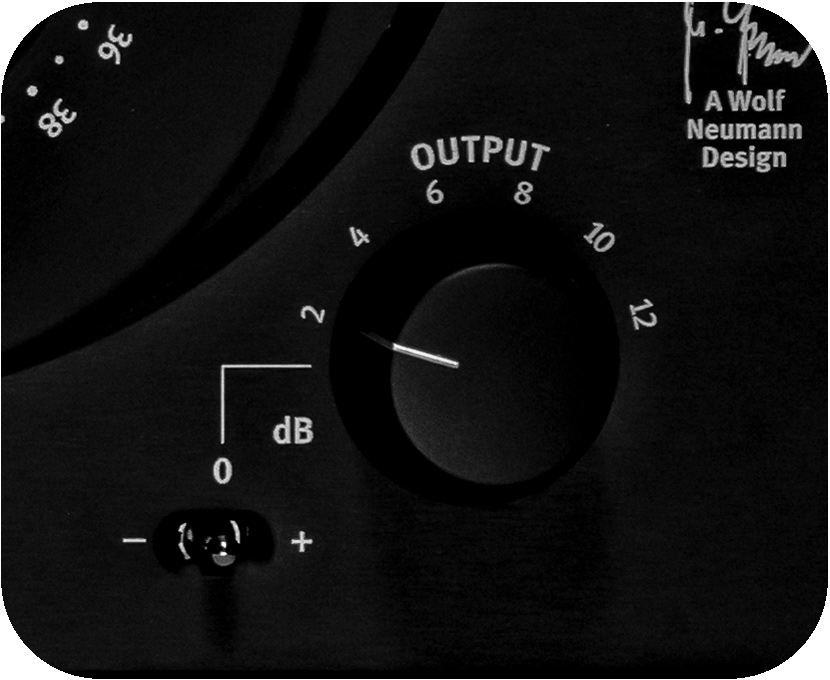
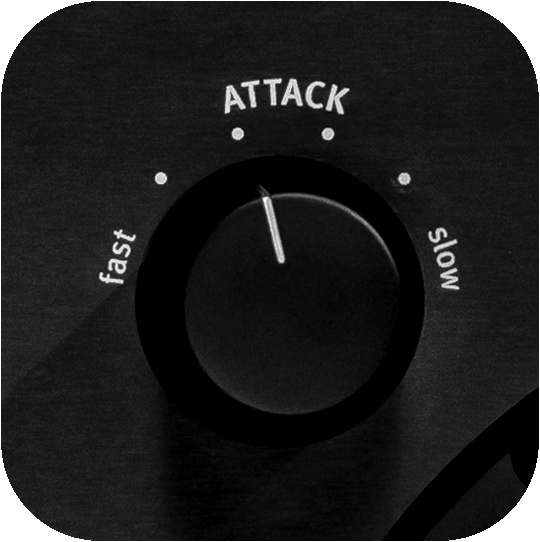
Attack determines the response time of the compressor.
The Attack time can be adjusted in six steps, from Fast to Slow.
The counterpart of the Attack is Release. The Release parameter determines how fast the compressor eases processing the signal.
Similarly to the Attack time, the Release time can also be set in six steps from Fast to Slow.
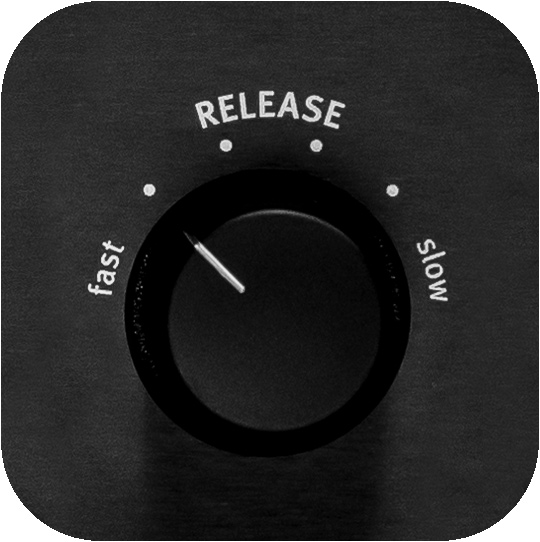

“Once you’ve used it you don’t want to let go.”
Fritz Fey
Studio Magazin
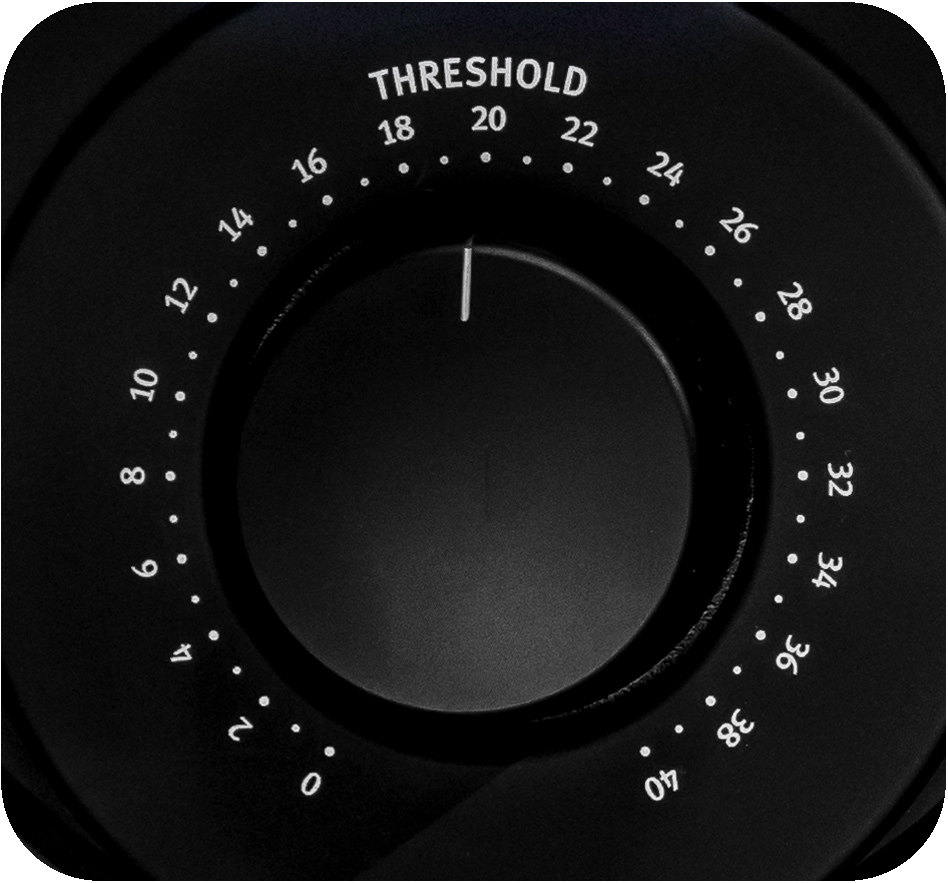
Threshold determines the level beyond which the compressor starts to compress. The compressor begins to process the signal once the threshold value has been exceeded. Only signals that exceed the threshold level are compressed. Signals whose level is beneath the threshold value are not processed.
The Threshold parameter of the IRON can be adjusted in 41 steps with the detent potentiometer.
The tube stage is controlled by a rectifier circuit. There are six diode control characteristics generated by germanium, silicon and LED diodes or combinations thereof.
The attack and release times vary depending on the rectifier circuit selected.
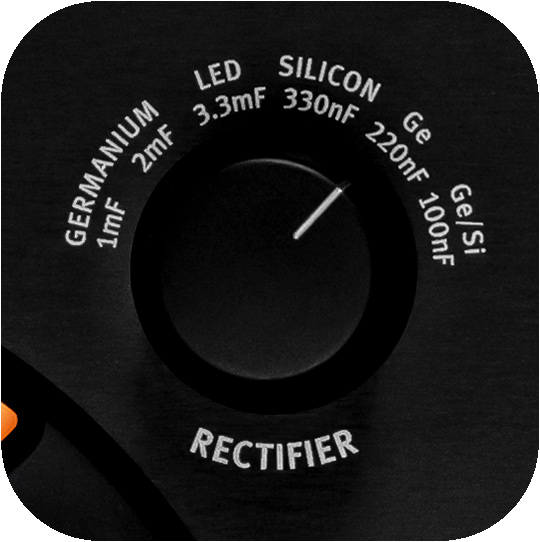
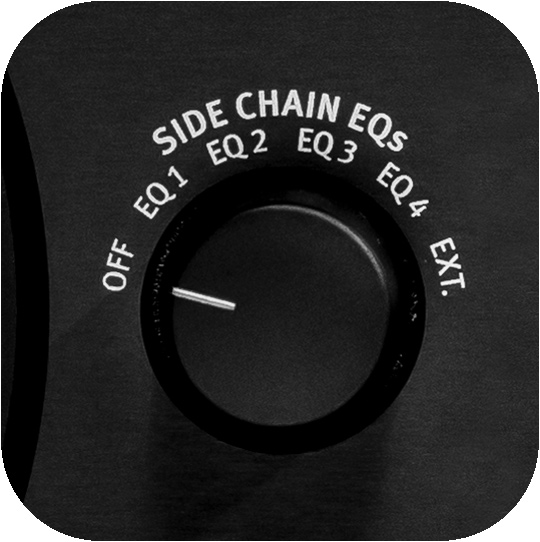
In position 1 (Off), only a capacitor is integrated into the side-chain signal to filter out frequencies lower than 20 Hz.
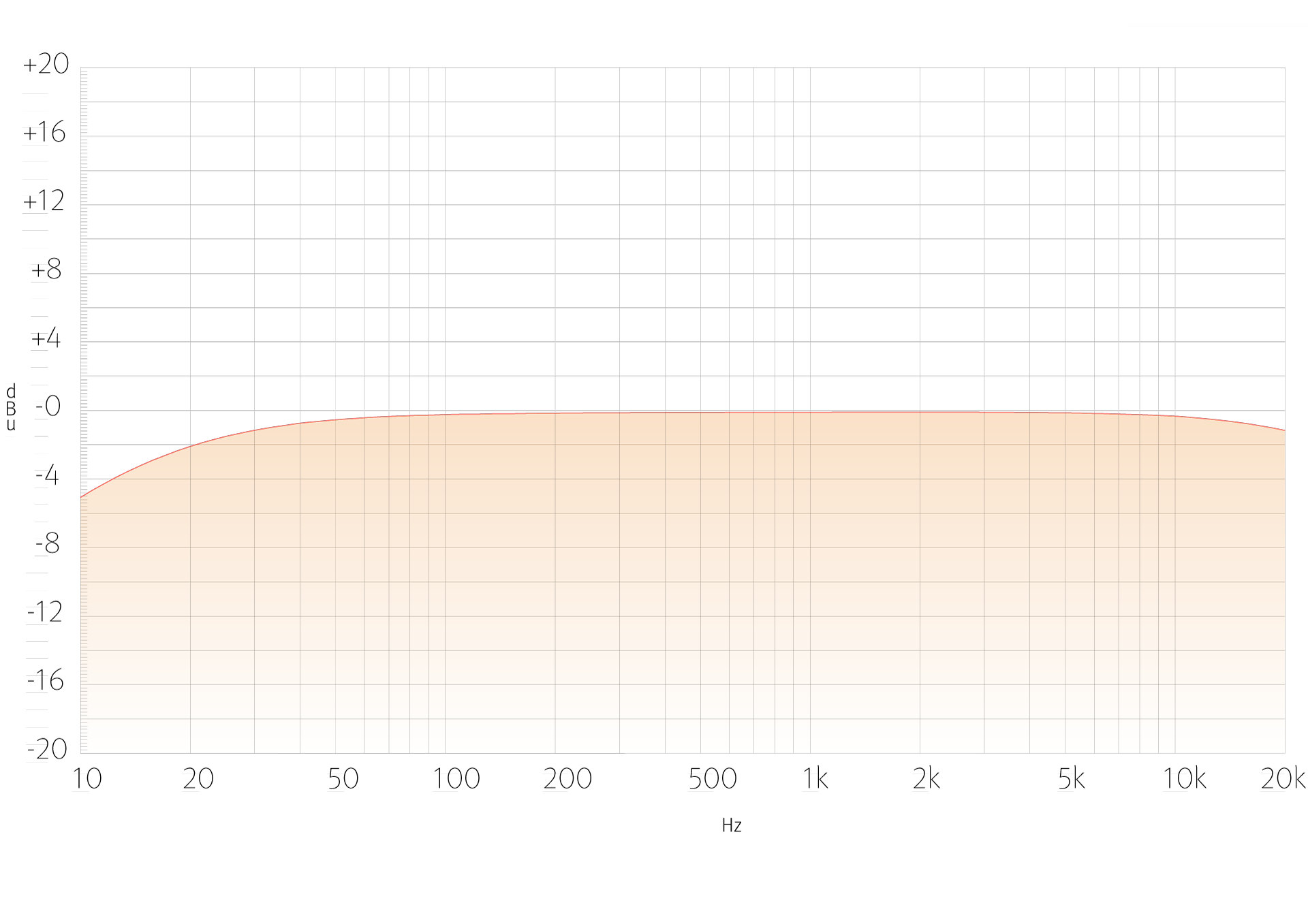
Position 2 (EQ 1) integrates a lowpass filter.
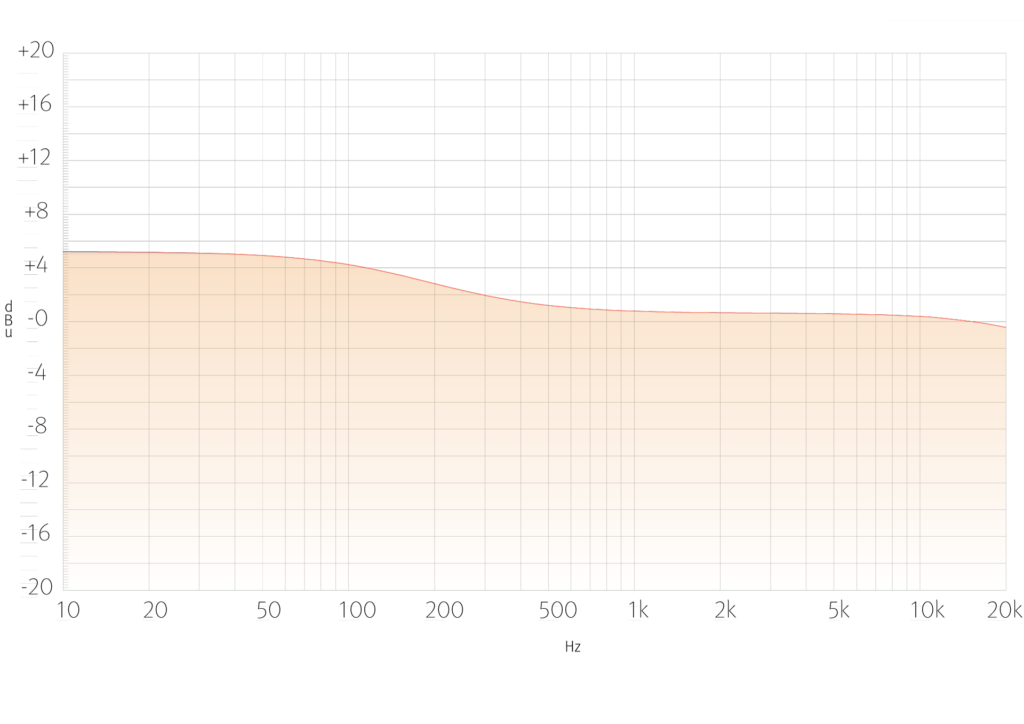
Position 3 (EQ 2) integrates a highpass filter.
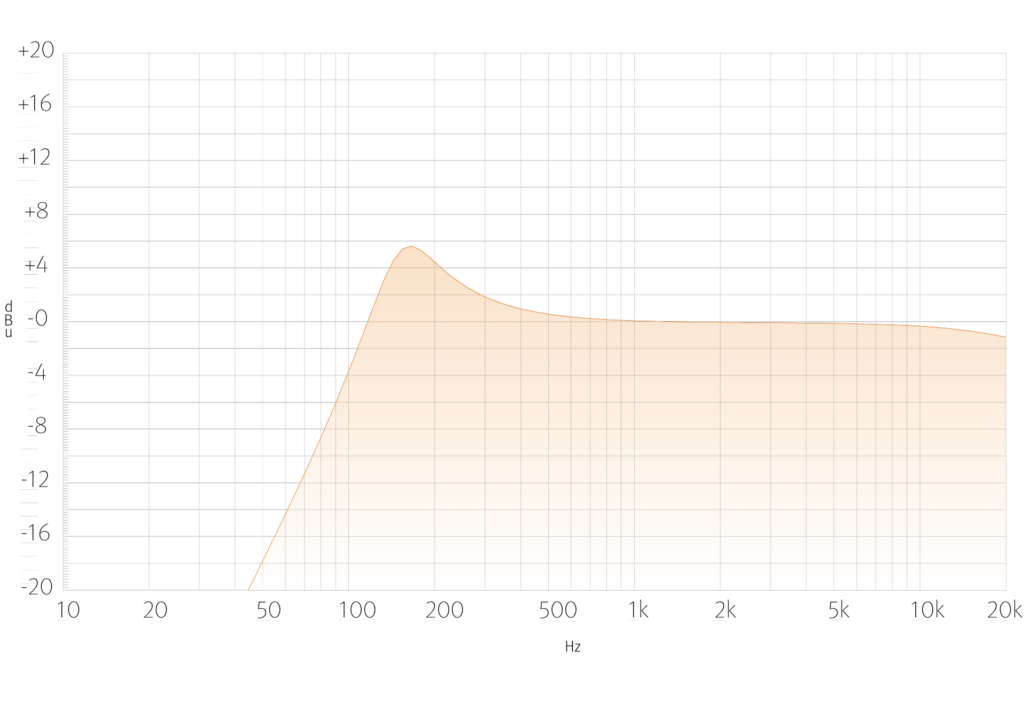
Position 4 (EQ 3) integrates a bandpass filter.
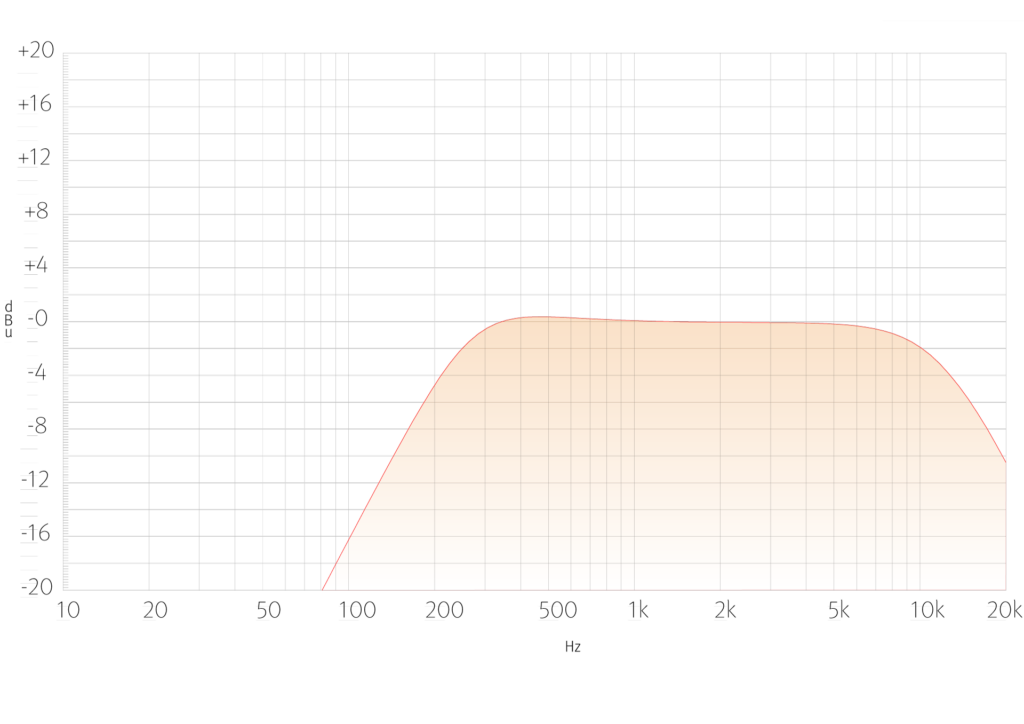
Position 5 (EQ 4) integrates a filter curve empirically designed by developer Wolfgang Neumann.
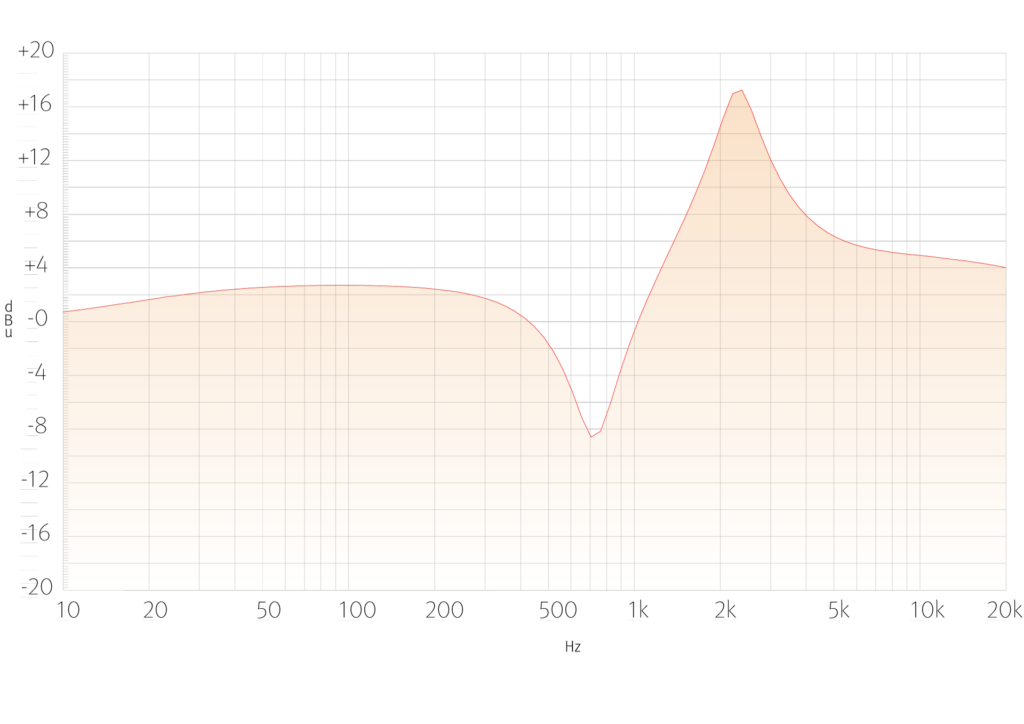
In position 6 (Ext) the external side-chain insert is activated. Via insert send and insert return, an external stereo equalizer can be integrated into the side-chain signal. Individual filter curves can be created to focus the response of the compression to certain frequency ranges.
The side-chain equalizers in the IRON Mastering Compressor only process the control signal – not the audio signal! If no external equalizer is connected to the side-chain insert or if the send and return of the side-chain insert are not bridged with a cable, the audio signal in the IRON will be interrupted when the switch position (Ext) is selected.

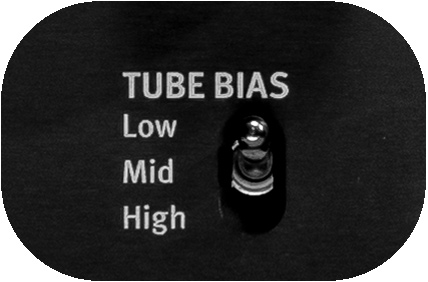
The Tube Bias switch allows you to determine the bias of the tubes according to three settings: Low, Mid, and High. The bias of a tube is the voltage present on the tube‘s grid. The higher the voltage, the less signal makes it from the cathode to the anode of the tube, which means the compression is stronger.
The modulation of the bias is the sum of the Threshold, Rectifier, Side Chain EQ, Attack, and Release parameters.
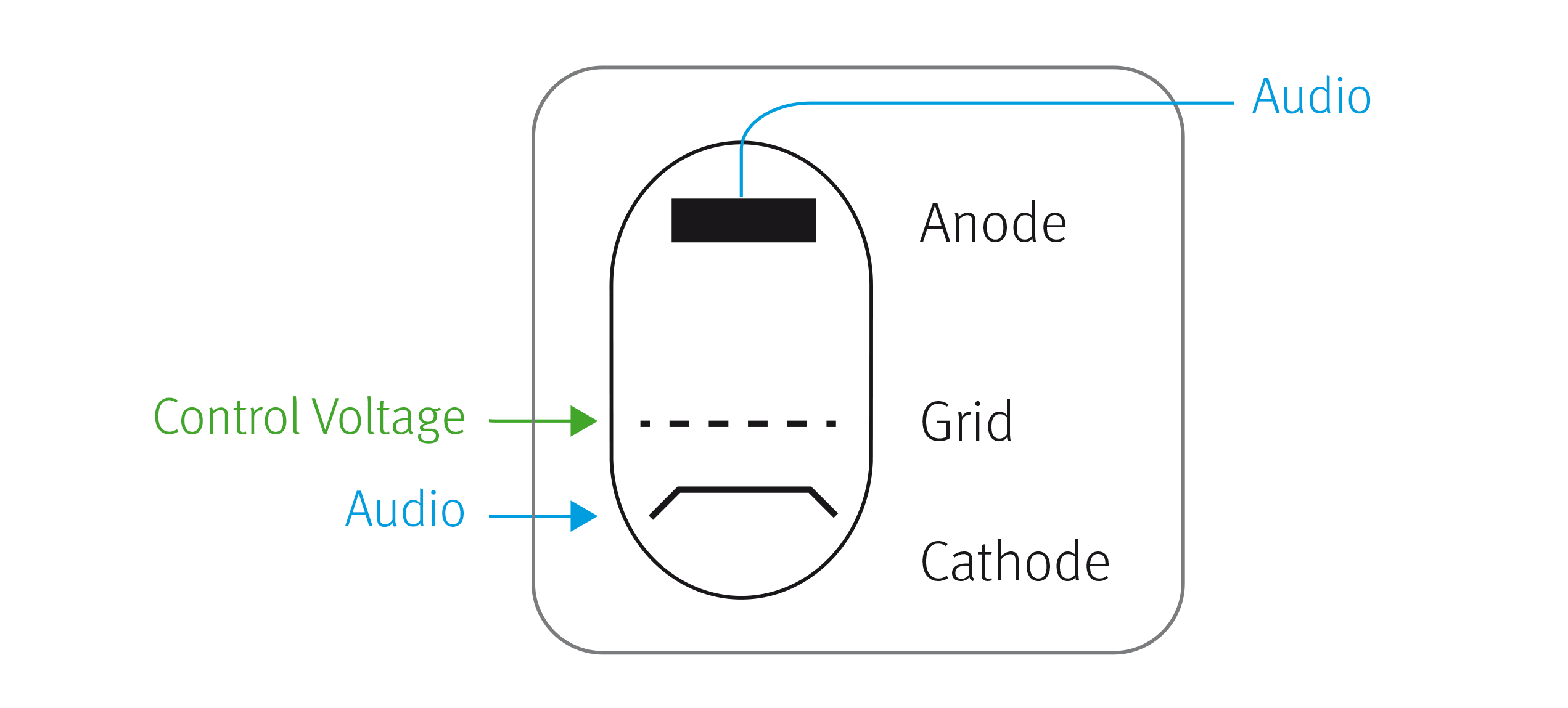
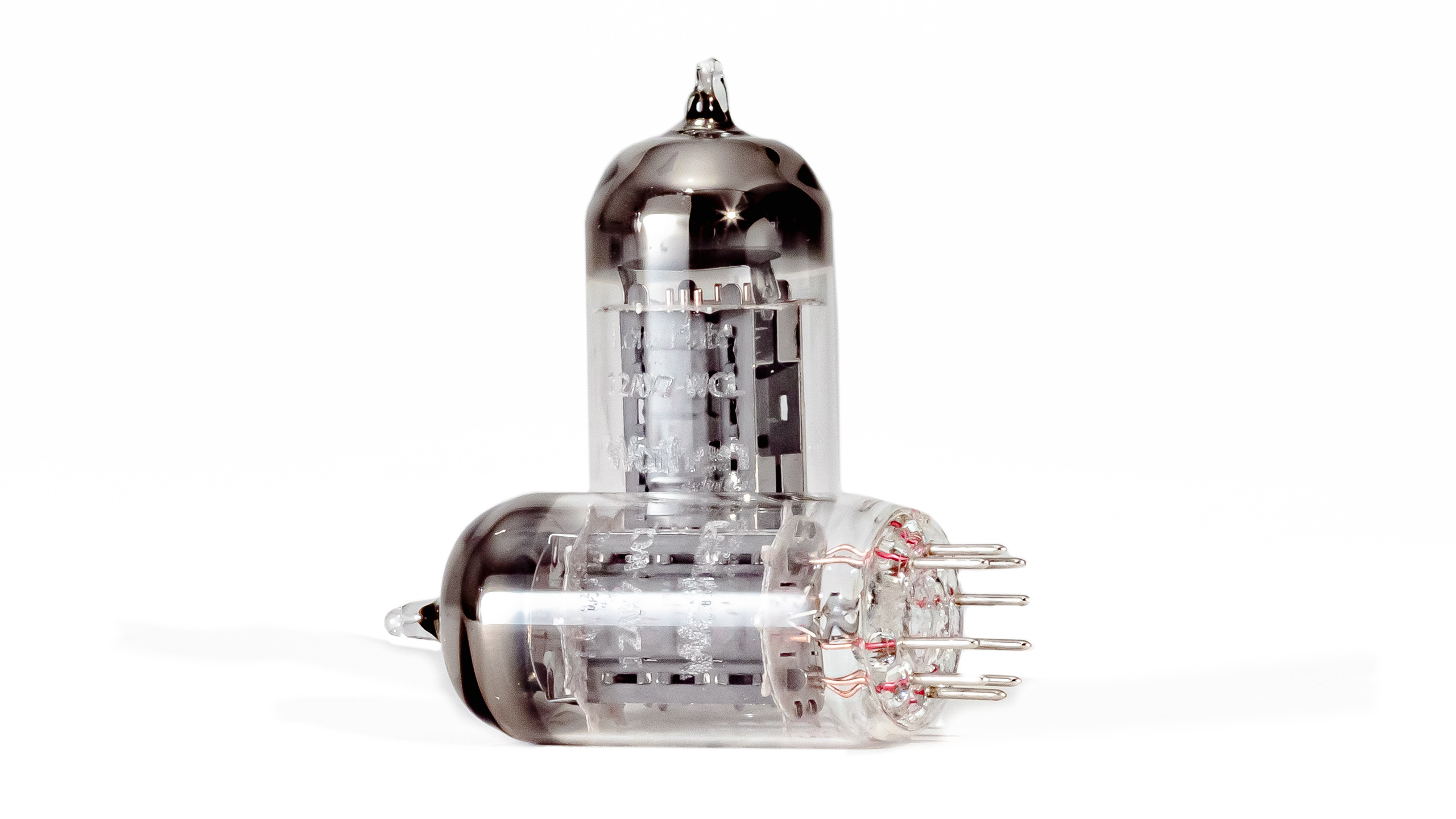
IRON uses four tubes in its circuit. A parallel connected pair for each channel. To receive mastering grade sound and performance it is necessary to use the best tubes available. It is not only crucial to use perfectly matched tubes – they also need to stay true to their specs as long as possible. Therefore IRON is equipped with matched 12AU7 tubes, which get paired with preselected matched pairs of Wathen CryoTone™12AX7-WCM Long Plate tubes at SPL.
Wathen Audiophile’s CryoTone™ tubes are cryogenically treated tubes. Cryogenics is the study of how to get to low temperatures and of how materials behave when they get there. Cryogenic treatment modifies the molecular structure in electronic components by reducing or eliminating voids and imperfections in the material. Wathen utilizes a cryogenic treatment process that is specifically designed to maximize all aspects of the sonic performance in audio tubes. Wathen CryoTone™ Long Plate versions of the 12AX7-WCM have unequaled soundstage, depth and frequency balance. Silky, clear and large from top to bottom with the quietest noise floor and an extended life-span.
IRON combines the best of modern technology and vintage magic.
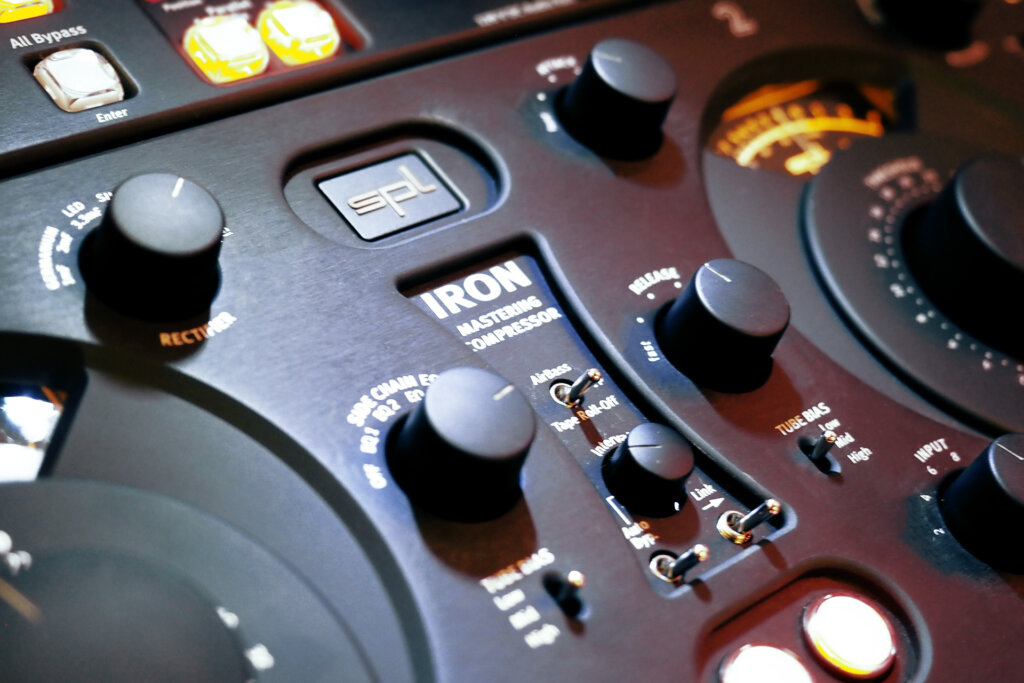
“The SPL IRON mastering compressor is very versatile. I work with it completely musically, completely by ear. You can use it very softly, but also perform very extreme settings, which heavily influence sound structure and dynamics.”
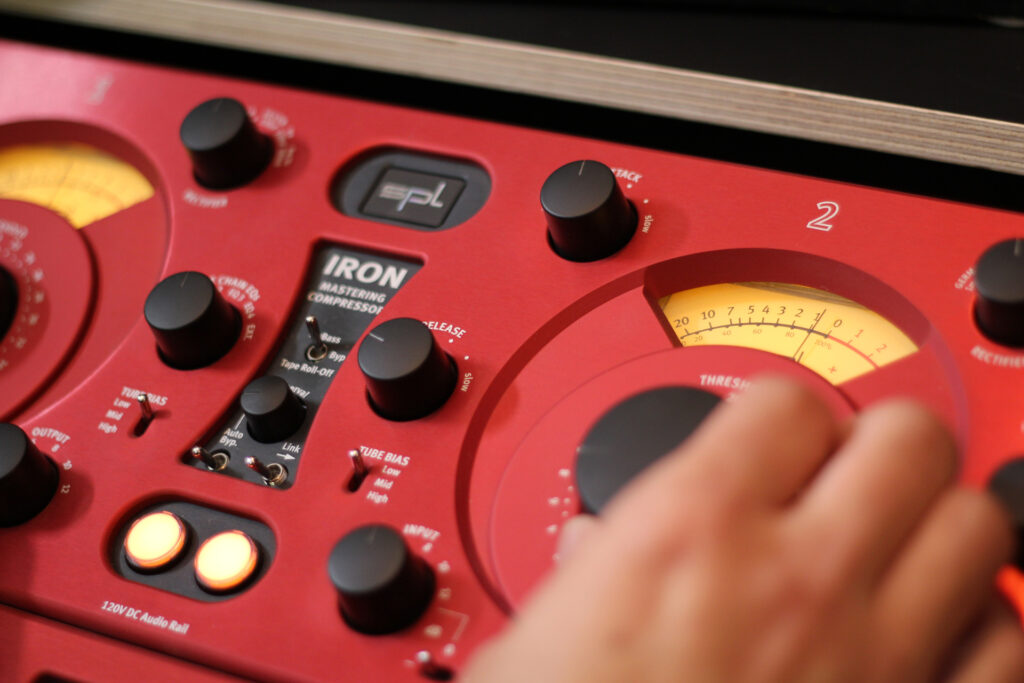
“Its headroom seems limitless. It avoids unwanted peaks and compresses the sound that passes through it in a very musical way. I owe it excellent masterings.”
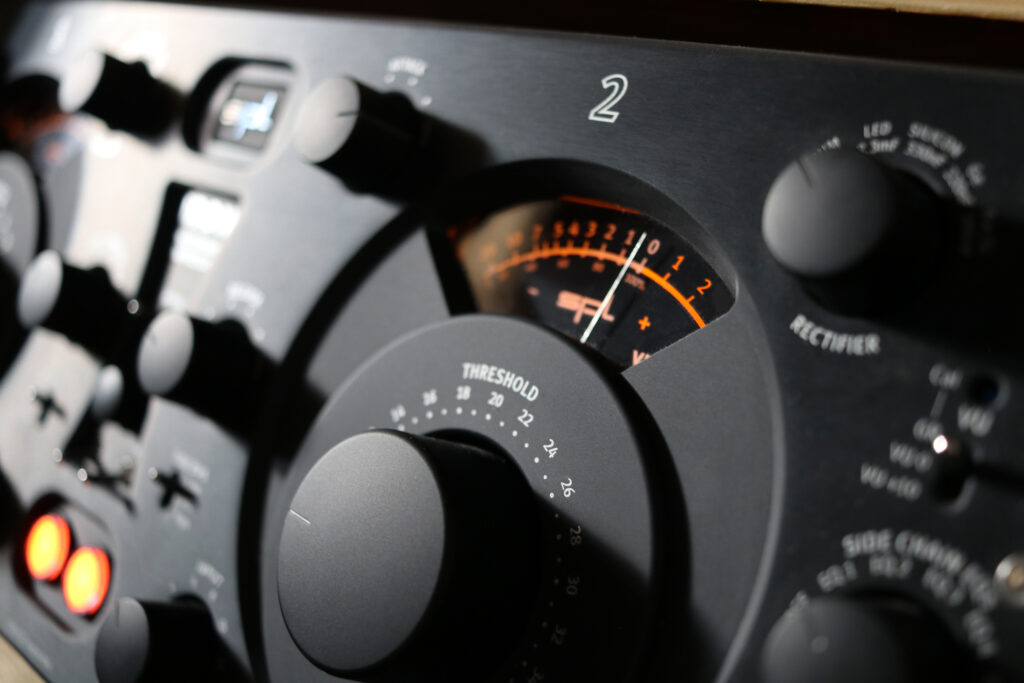
“Before going back into my converters my signal usually gets compressed and lifted to heaven by the IRON compressor.”
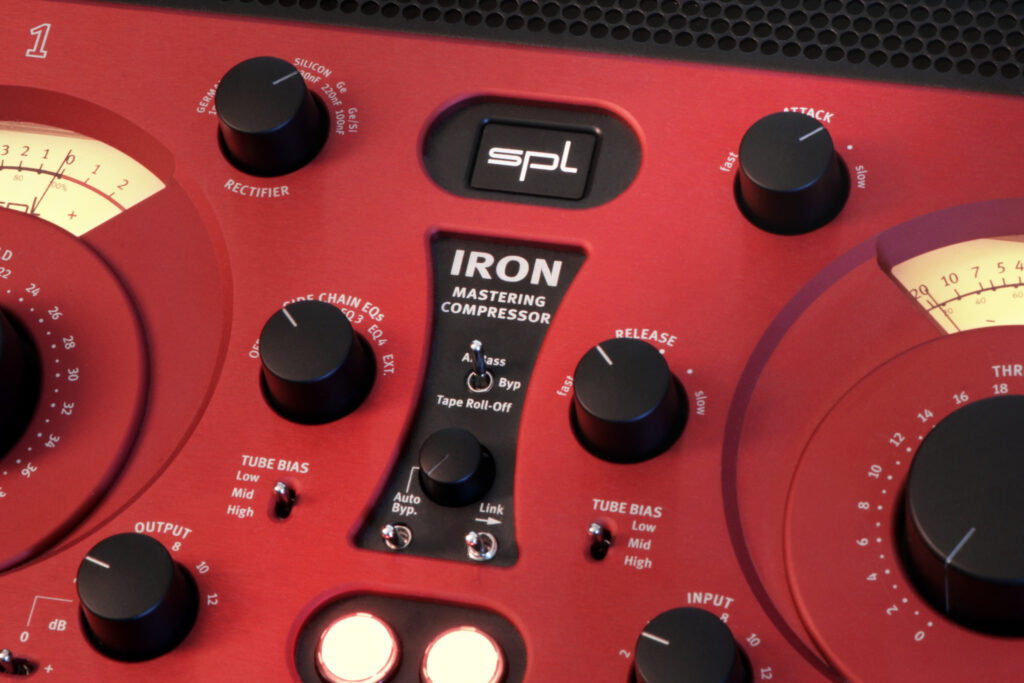
“This is my color box. I barely not compress in mastering. When mixing, then I use it to glue some stems.”
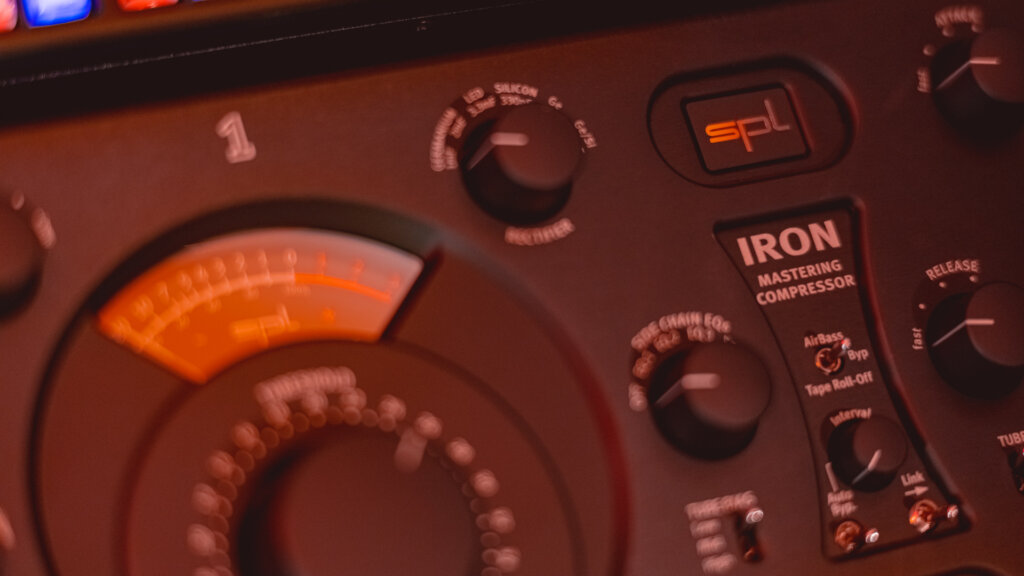
“Nice low-mid glue and I really like the tube bias feature. I really like how you can drive the tube bias voltage differently with the three step adjustment.”
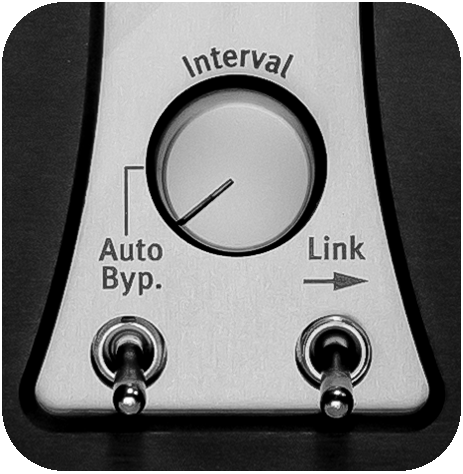
By activating the Link function, the Threshold, Bias, Attack, Release, Rectifier and Side Chain EQ parameters are controlled by the right side (channel 2). In Link mode, it is no longer necessary to make these settings on the left side (channel 1).
IRON operates with a summed side-chain control signal when Link is active. The signal of the right channel then also influences the compression on the left channel – and vice versa. If the Link mode is not active, the left and right channels of the IRON operate completely independent of each other.
Channels 1 and 2 are activated with the big, illuminated, circular switches. In Auto Bypass mode, the channels are automatically switched on and off, which allows a more objective evaluation of the processing. The Interval control is used to adjust the time window of the automatic Auto-Bypass continuously.
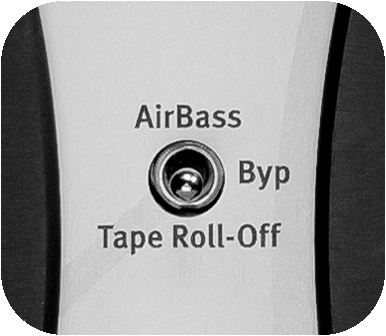
The compressor is followed by a passive filter network with two equalizer presets: AirBass and Tape Roll-Off.
The AirBass filter boosts low and high frequencies by about 1.5 dB and the Tape Roll-Off filter emulates the typical frequency response of a tape machine.
AirBass
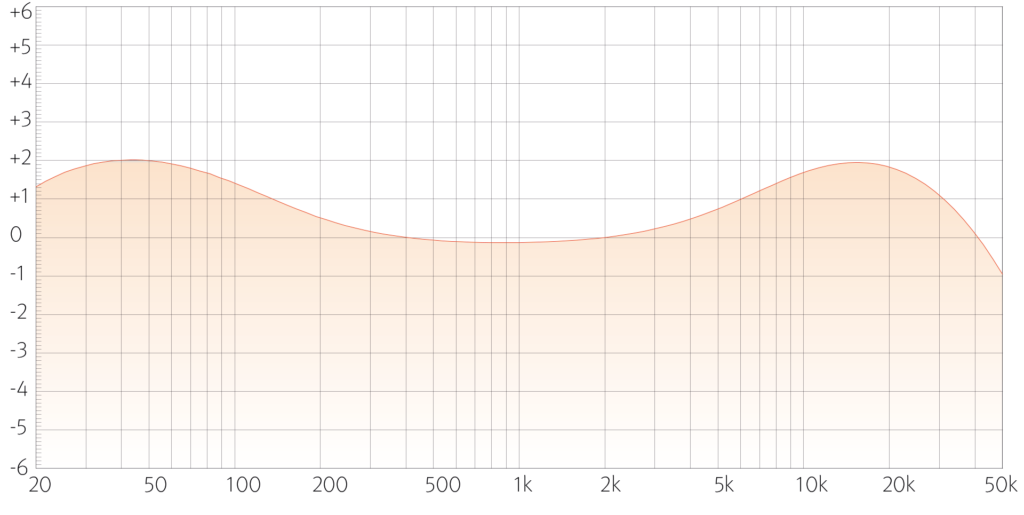
Tape Roll-Off
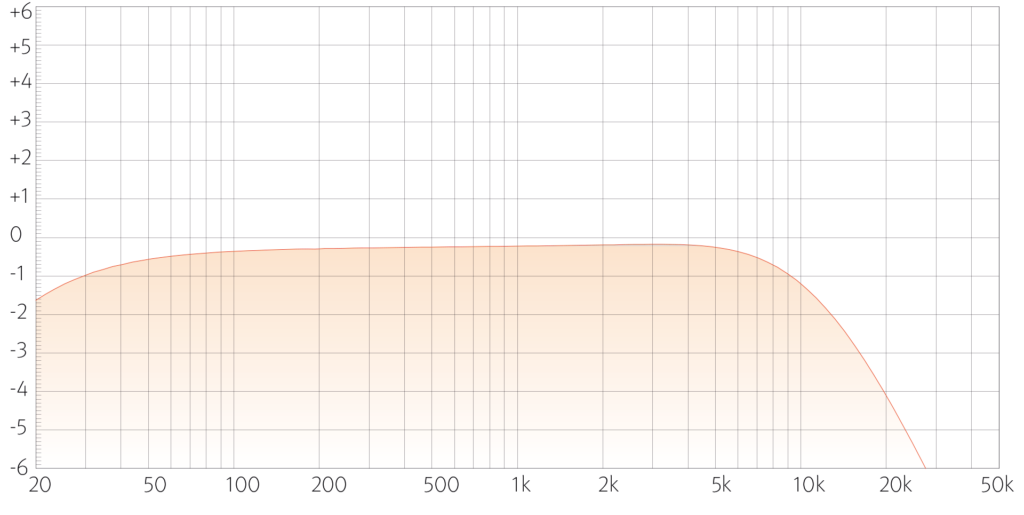
The toggle switch with three positions can be used to select whether the gain reduction or the output level (0 dB and + 10 dB) is shown in the VU meter.
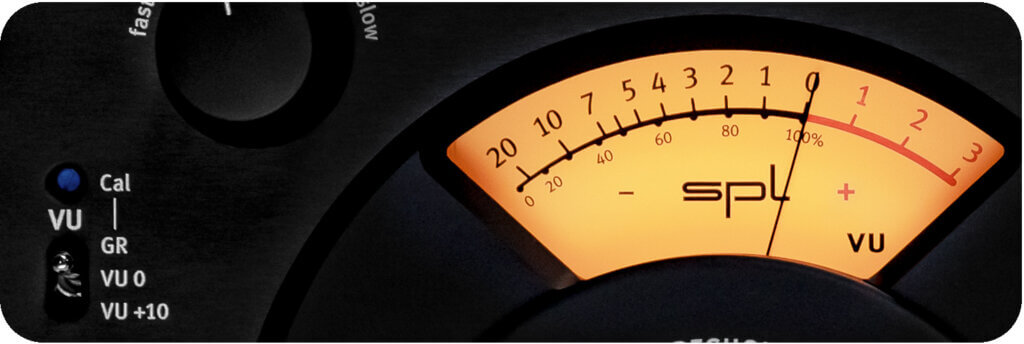
Threshold is set via a detented potentiometer. All other functions on the IRON are operated via switches and are therefore also recallable.
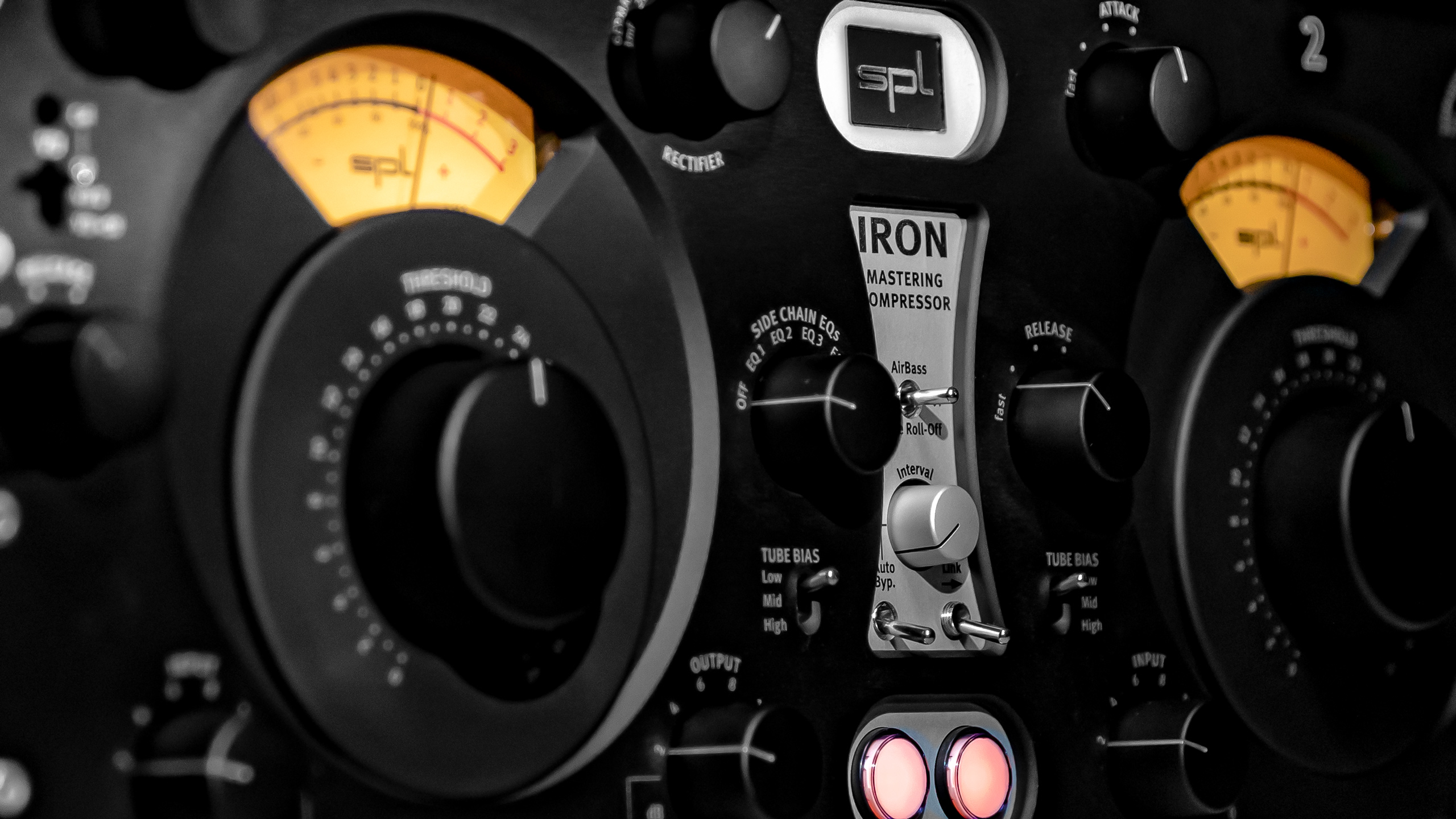
The IRON Mastering Compressor has been updated with a hardware revision in October 2022. This can be recognized by the “IRON v2” labelling on the serial number sticker and the side-chain insert with XLR sockets. (See picture).
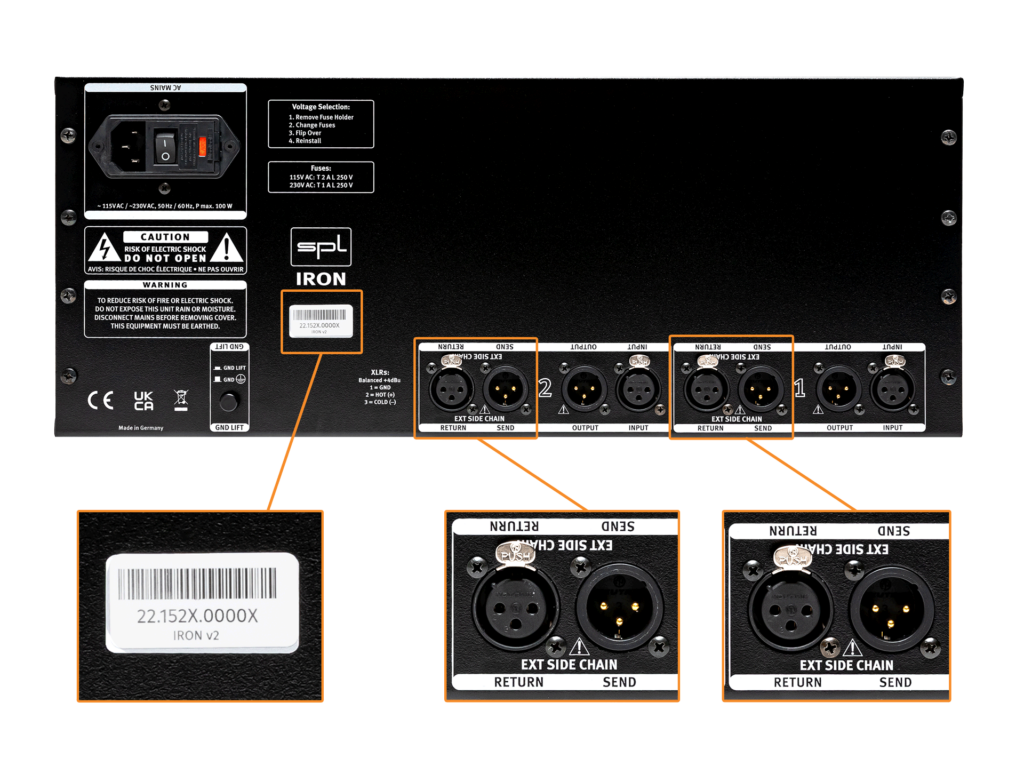
The current version – IRON v2 – differs from the first hardware version in the following details:
IRON v2 features balanced side-chain inserts with send and return XLR sockets. The first hardware version only features side-chain inputs with TS jacks to receive a trigger signal.
IRON v2 features different side-chain EQ presets.
IRON v2 is equipped with Wathen CryoTone™ 12AX7-WCM Long Plate tubes.
The product page describes the product features of the IRON v2.
More information about the first hardware version is available in the corresponding manual.
Download: Manual – IRON, first hardware version (German)
Download: Manual – IRON, first hardware version (English)
The current manual of IRON v2 is available for download at the bottom of this product page within the section “Manuals”.
The 120V technology is our reference technology. The 120V technology is unique in the world. It operates at a DC voltage of 120 volts. This is four times that of IC-based semiconductor op-amps.
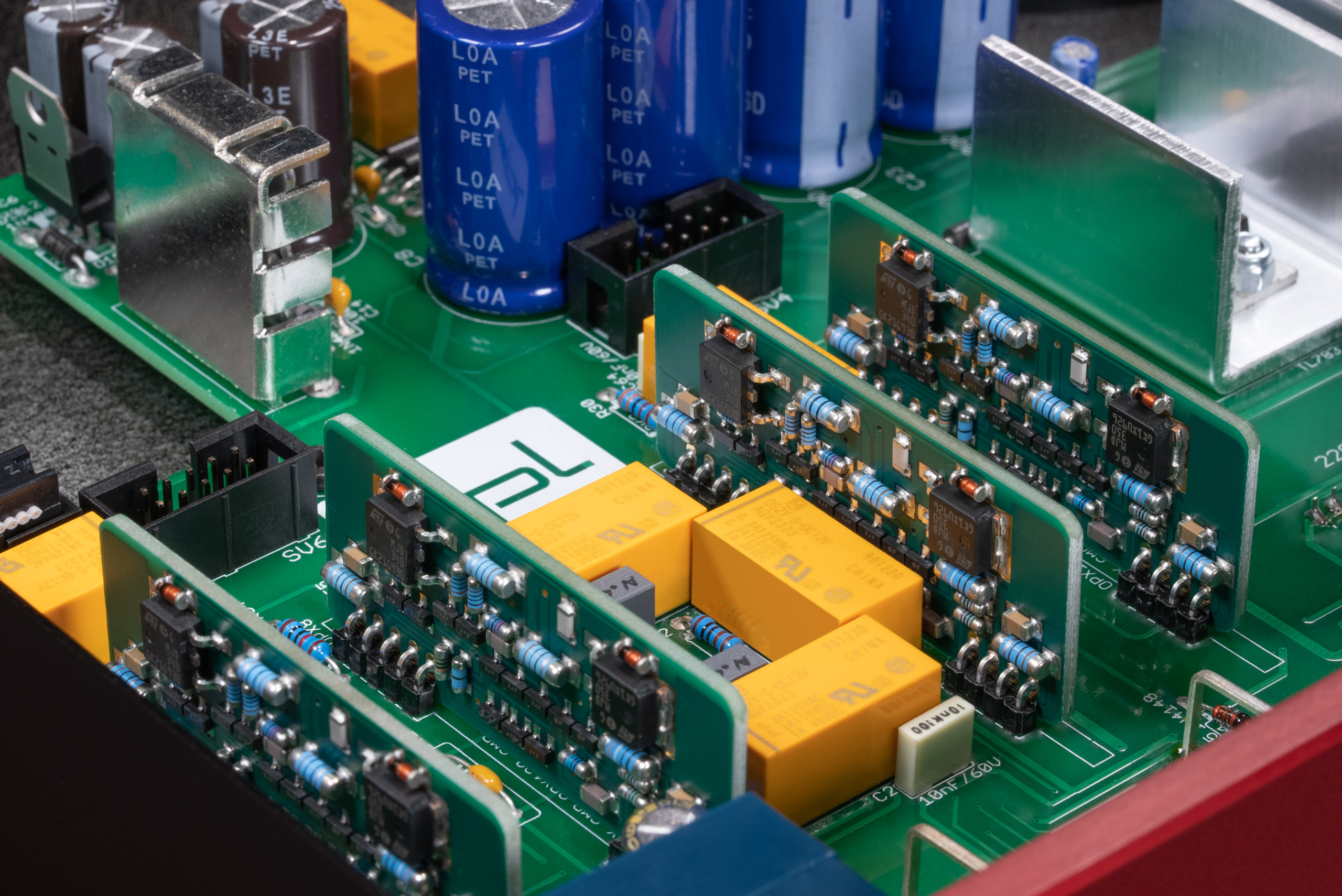
The highest possible audio quality requires the highest possible audio operating voltage.
The 120V technology works with +/-60 V. To be able to handle such a high voltage, we have developed special proprietary operational amplifiers that can operate with a DC voltage of +/-60 V: the SPL 120V SUPRA operational amplifiers.
This high voltage would destroy conventional components and operational amplifiers.
The 120V technology achieves exceptional technical specifications and sonic benefits. Technically, in terms of dynamic range, signal-to-noise ratio and headroom. Sonically, in terms of richness of detail and an absolutely relaxed listening experience.
By the way, the “120V” in the name of the technology has nothing to do with the local mains voltage from the mains power socket. This is about the operating voltage inside the device with which the audio signals are processed.
The mains voltage from the mains power socket is transformed to the required secondary voltage in the device’s internal linear power supply with toroidal transformer. Rectifiers convert this AC voltage into DC voltage required in the audio device.
The idea for SPL 120V technology and the SUPRA operational amplifier based on this technology were developed in the 1990s by SPL founder and chief developer Wolfgang Neumann.
With the goal of building the best mastering console ever, this basic technological philosophy then took shape for the first time – thus the SPL MMC1 Mastering Console for Galaxy Studios saw the light of day in 2000.
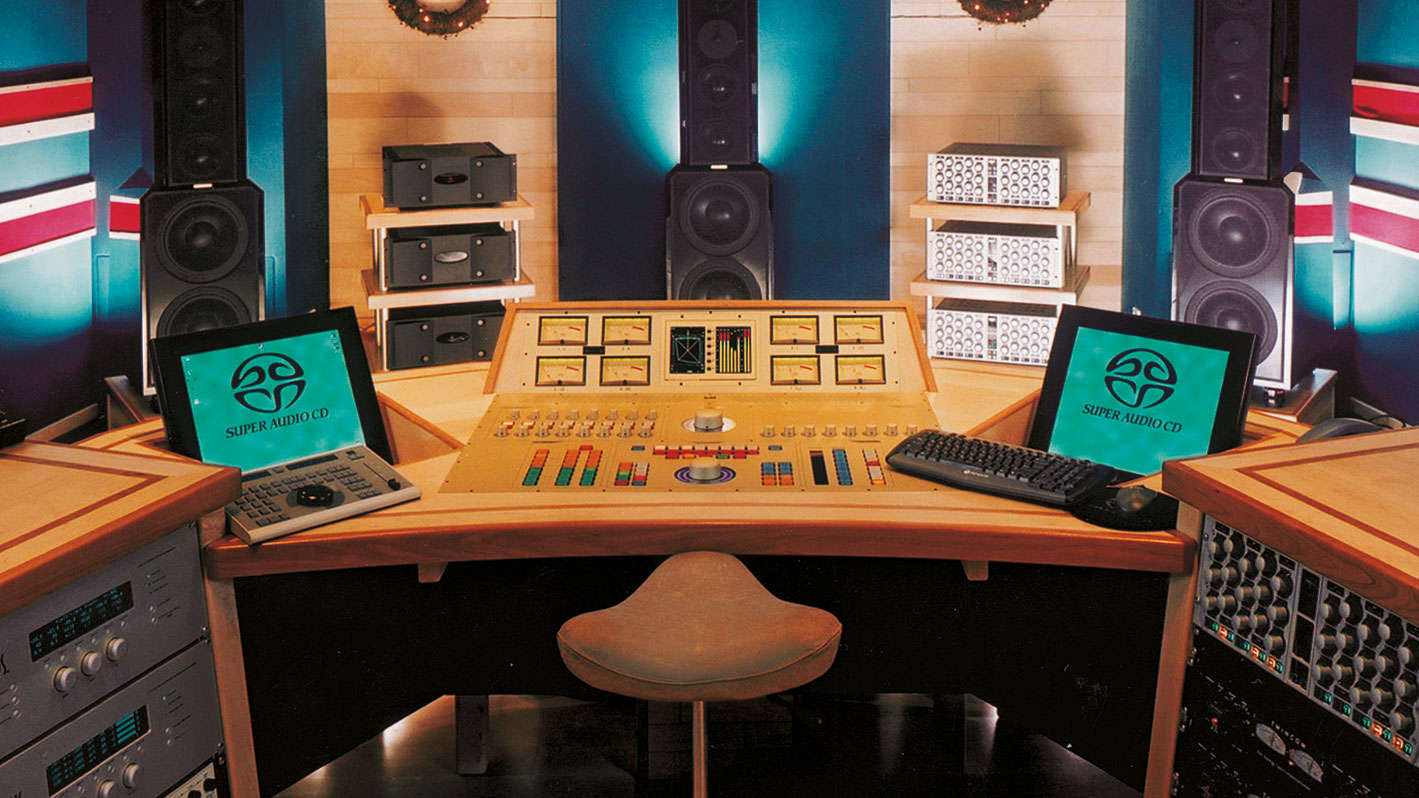
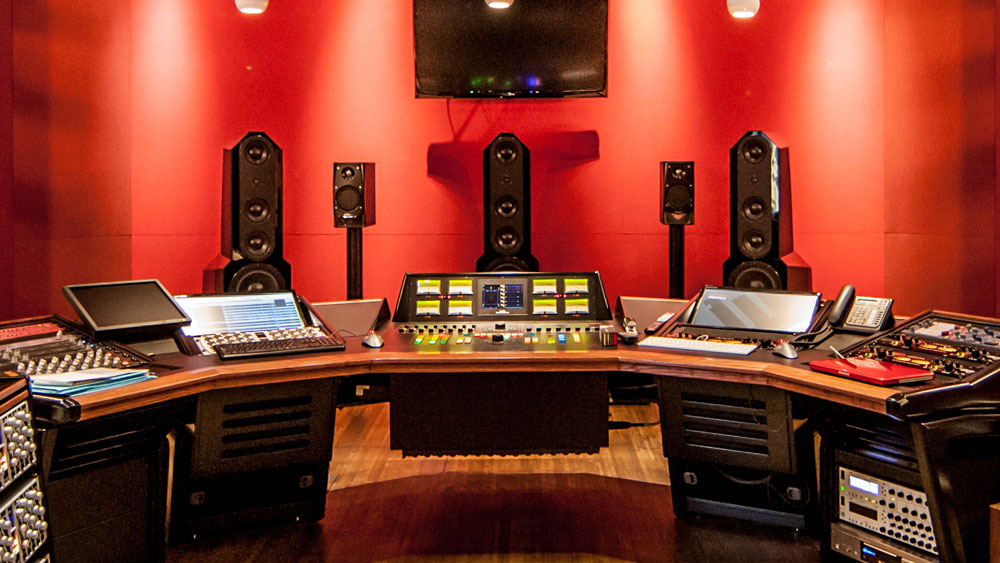
The outstanding sonic and technical features quickly got around in the scene – so further orders were not long in coming.
Besides the MMC 1, another legendary product with 120V technology was created with the PQ, the “King of Parametric Equalizers”.
Since that time, 120V technology has been the foundation for all SPL premium products. Meanwhile, not only for mastering applications, but also for the, studio or hifi use.
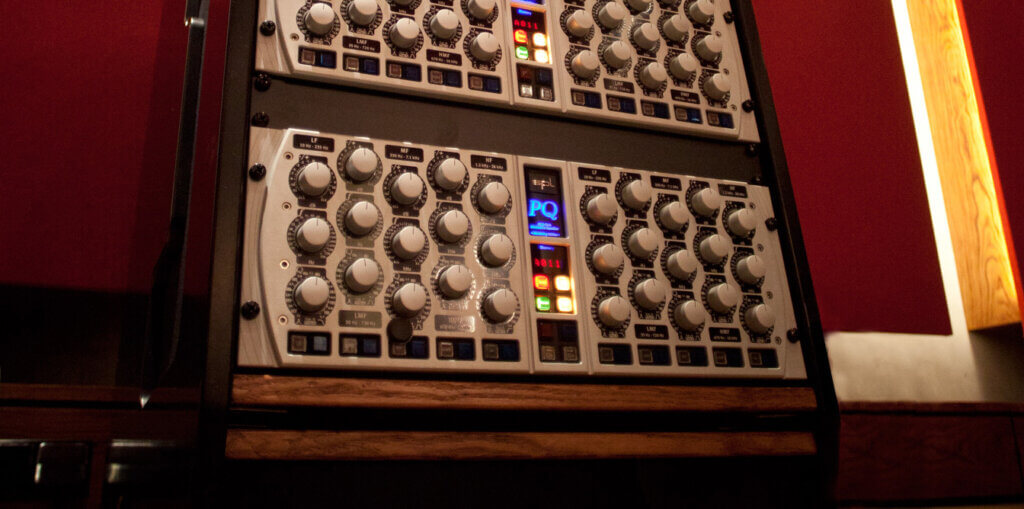

What exactly is that?
And what does it do?
Good questions need good answers.
And that’s what the 120V technology video gives you.
Most audio devices work with an internal operating voltage of +/-15 volts and can thus process a maximum input level of +21.5 dBu. If a DAC, for example, has an output level of +22 dBu at 0 dBFS, level peaks of the music material would already cause overloads in the input stage of the device.
All components in the audio device often operate at their limits. The result is an unsteady sound that causes stress and faster ear fatigue.
SPL devices with 120V technology can handle input levels of +32.5 dBu thanks to the higher internal operating voltage of +/- 60 volts – thus offering 12 dB more headroom. All components consequently operate continuously in the optimum operating range. The result is a very pleasant, natural and relaxed sound experience. So you can enjoy your music in every detail.
These diagrams clearly show the superiority of the 120V technology in comparison to other circuits with lower, common operating voltages.
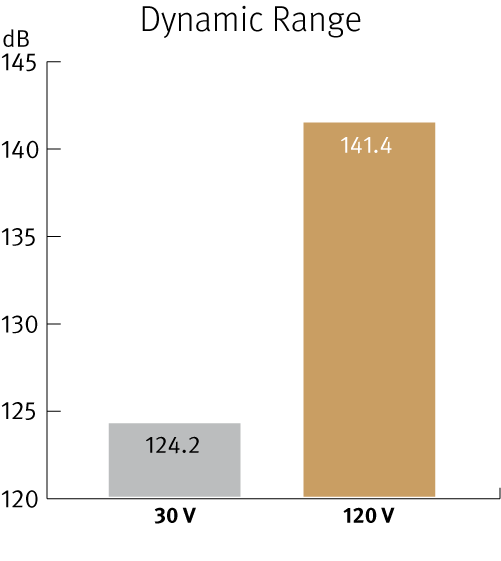
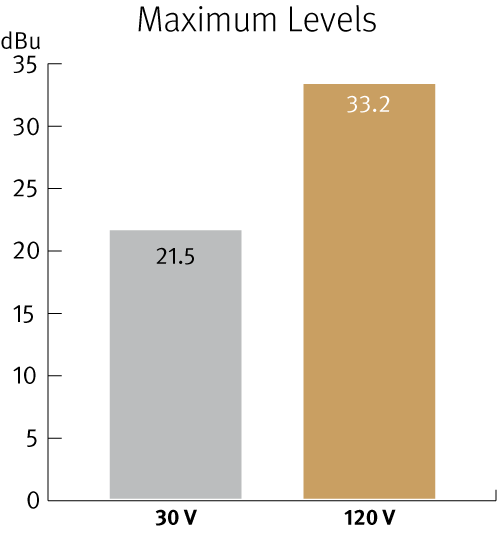
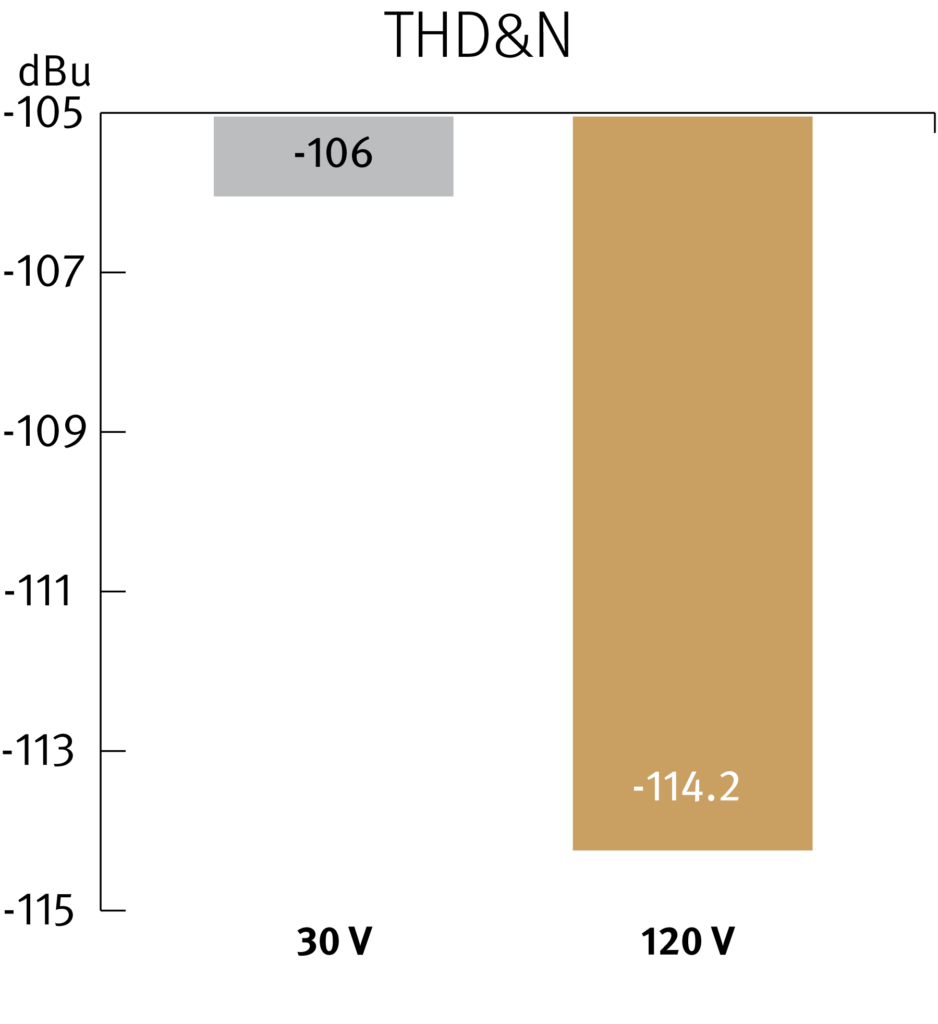
With all SPL devices series we develop not only according to plan, but also by ear. All important components are installed on the circuit boards using Through-hole technology. This way we can ensure that we can use the best sounding components.
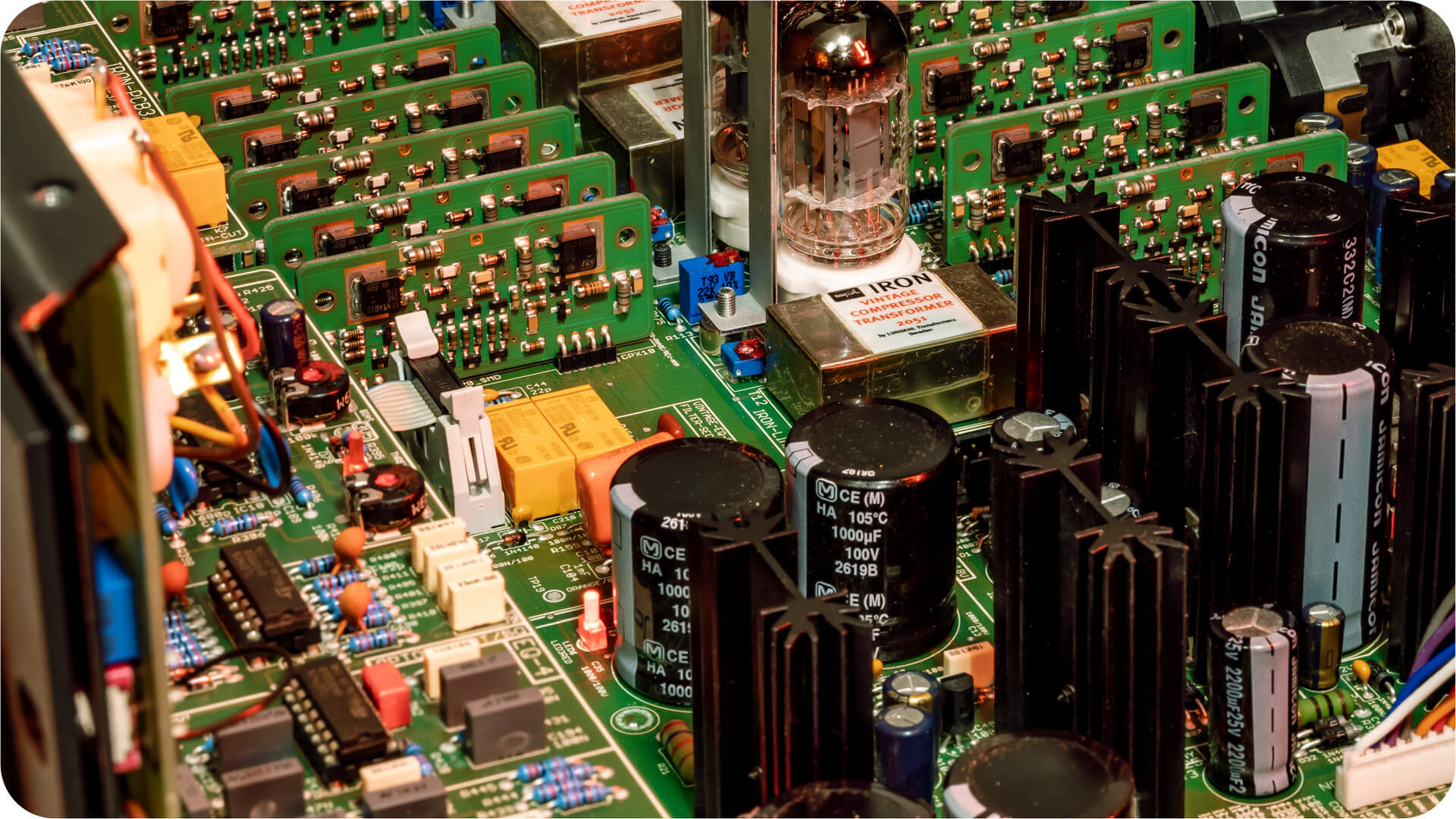
That’s why we manufacture all devices in our own production facility in Niederkrüchten on the Lower Rhine, Germany.

If an IRON Mastering Compressor should ever might need service, a recalibration or a tube change after many years of intensive use, this is no problem at all. Especially tubes are wearing parts that may need to be replaced or recalibrated after a longer period of use. On our “Support & Contact” page, maintenance can be arranged via “Repair Request”, either directly through us or through one of our international service partners.
Any kind of SPL spare parts, such as VU meters, switches, housing parts or aluminum knobs can be ordered via “Spare Parts Request”.
For any question about the product, contact us via “Pre-Sales & After-Sales Support”.
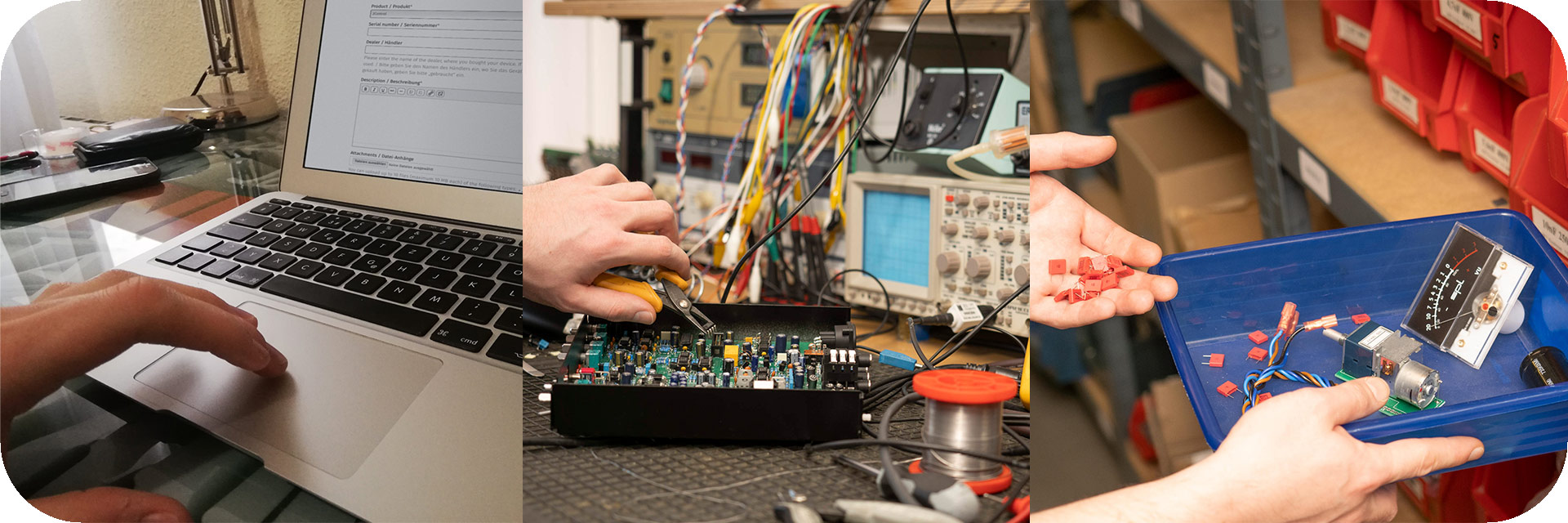






















The replacement of fuses and the switching of mains voltages must only be performed by qualified technicians. Fuses must only be replaced with fuses of the same type and specifications.
Referenz: 0 dBu = 0,775V. Technische Änderungen vorbehalten.
In Stock!
The product is in stock in our warehouse in Niederkrüchten, Germany, and will be shipped the same or next working day.
We process the orders after receipt of the order and update the stock in the online shop regularly. If the product is no longer available at short notice due to high order volume, you naturally have the right to withdraw from the purchase (see Right of Withdrawal).
In any case, you will receive an e-mail with details of the delivery and the estimated delivery time.
Available soon!
The product is not in stock in our warehouse in Niederkrüchten, Germany. Usually it will be available again within 5 working days.
In any case, you will receive an e-mail with the details of the delivery and the estimated delivery time.
Of course you have the right to withdraw from your purchase (see Right of Withdrawal).
Currently unavailable.
This product is currently sold out and unavailable.
Auf Lager!
Das Produkt ist in unserem Lager Niederkrüchten vorrätig und wird noch am selben oder nächsten Werktag versendet.
Wir arbeiten die Bestellungen nach Bestelleingang ab und aktualisieren den Bestand im Online-Shop regelmäßig. Falls das Produkt wegen hohem Bestellaufkommens kurzfristig nicht mehr verfügbar ist, hast du selbstverständlich das Recht, vom Kauf zurückzutreten (siehe Widerrufbelehrung).
In jeden Fall erhältst du eine E-Mail mit den Einzelheiten der Lieferung und der voraussichtlichen Lieferzeit.
Bald verfügbar!
Das Produkt ist in unserem Lager Niederkrüchten nicht vorrätig. Gewöhnlich ist es innerhalb von 5 Werktagen wieder verfügbar.
Auf jeden Fall erhältst du eine E-Mail mit den Einzelheiten der Lieferung und der voraussichtlichen Lieferzeit.
Selbstverständlich hast du das Recht, vom Kauf zurückzutreten (siehe Widerrufbelehrung).
Zur Zeit nicht verfügbar.
Dieses Produkt ist derzeit ausverkauft und nicht verfügbar.

Due to Covid19 there are no events scheduled at this time.

Aufgrund von Covid19 sind derzeit keine Events geplant.
Notwendige Cookies sind für das ordnungsgemäße Funktionieren der Website unbedingt erforderlich. Diese Cookies stellen grundlegende Funktionalitäten und Sicherheitsmerkmale der Website sicher, anonymisiert.
| Cookie | Duration | Description |
|---|---|---|
| cookielawinfo-checbox-analytics | 11 months | This cookie is set by GDPR Cookie Consent plugin. The cookie is used to store the user consent for the cookies in the category "Analytics". |
| cookielawinfo-checbox-functional | 11 months | The cookie is set by GDPR cookie consent to record the user consent for the cookies in the category "Functional". |
| cookielawinfo-checbox-others | 11 months | This cookie is set by GDPR Cookie Consent plugin. The cookie is used to store the user consent for the cookies in the category "Other. |
| cookielawinfo-checkbox-advertisement | 1 year | The cookie is set by GDPR cookie consent to record the user consent for the cookies in the category "Advertisement". |
| cookielawinfo-checkbox-necessary | 11 months | This cookie is set by GDPR Cookie Consent plugin. The cookies is used to store the user consent for the cookies in the category "Necessary". |
| cookielawinfo-checkbox-performance | 11 months | This cookie is set by GDPR Cookie Consent plugin. The cookie is used to store the user consent for the cookies in the category "Performance". |
| gpnf_form_session_2 | 7 days | Saves entries of the spare parts request form |
| gpnf_form_session_4 | 7 days | Saves entries of the spare parts request form |
| viewed_cookie_policy | 11 months | The cookie is set by the GDPR Cookie Consent plugin and is used to store whether or not user has consented to the use of cookies. It does not store any personal data. |
Performance-Cookies werden verwendet, um die wichtigsten Leistungsindizes der Website zu verstehen und zu analysieren, was dazu beiträgt, den Besuchern ein besseres Benutzererlebnis zu bieten.
Andere nicht kategorisierte Cookies sind solche, die analysiert werden und noch nicht in eine Kategorie eingeordnet worden sind.
| Cookie | Duration | Description |
|---|---|---|
| complianz_policy_id | 1 year | No description |
Analytische Cookies werden verwendet, um zu verstehen, wie Besucher mit der Website interagieren. Diese Cookies helfen dabei, Informationen über Metriken wie die Anzahl der Besucher, Absprungrate, Verkehrsquelle usw. zu liefern.
Funktionale Cookies helfen dabei, bestimmte Funktionen auszuführen, wie z. B. das Teilen des Inhalts der Website auf Social-Media-Plattformen, das Sammeln von Feedbacks und andere Funktionen von Drittanbietern.
Werbe-Cookies werden verwendet, um Besuchern relevante Werbung und Marketing-Kampagnen anzubieten. Diese Cookies verfolgen Besucher über Websites hinweg und sammeln Informationen, um maßgeschneiderte Werbung bereitzustellen.